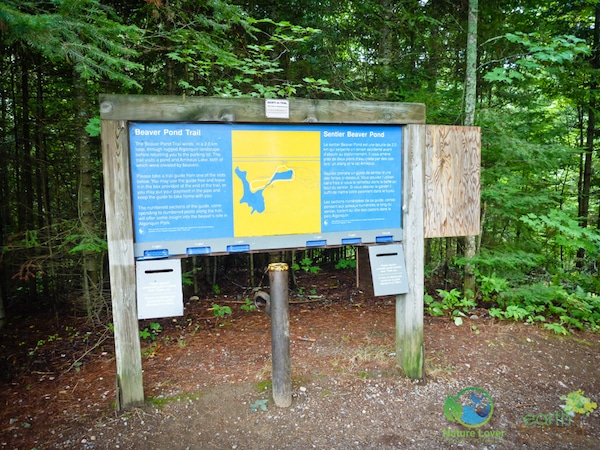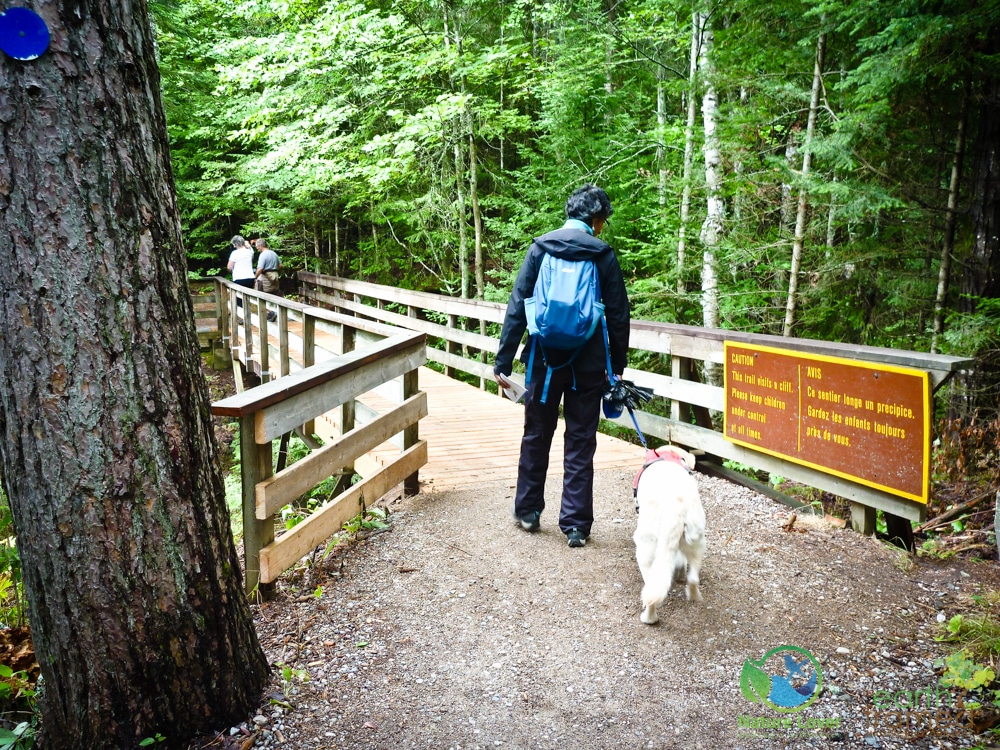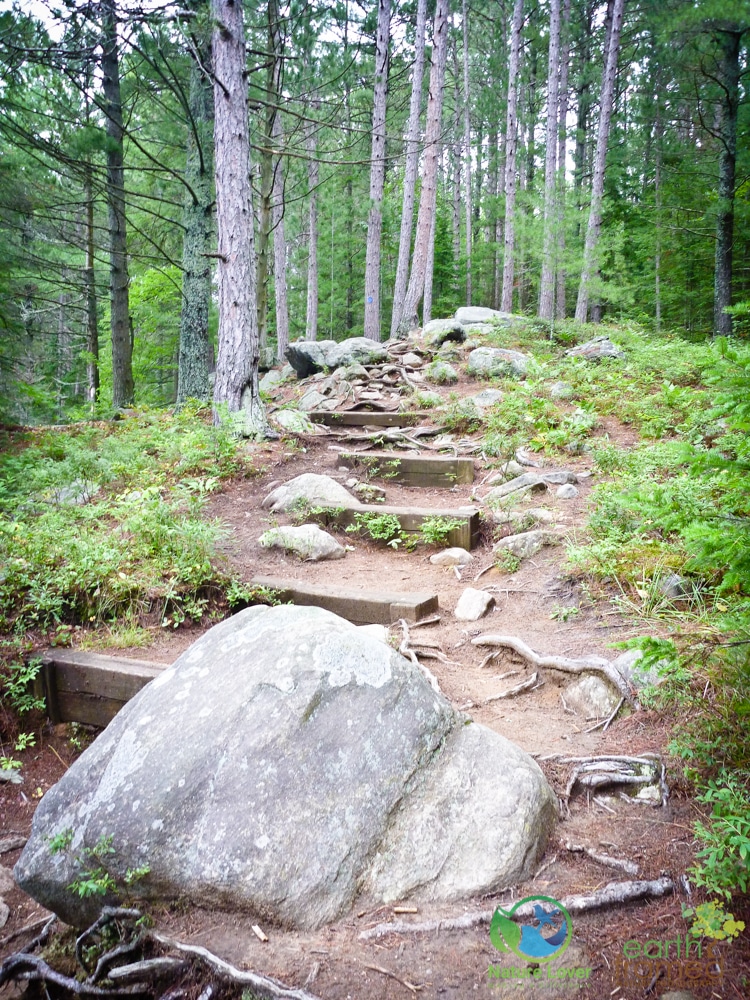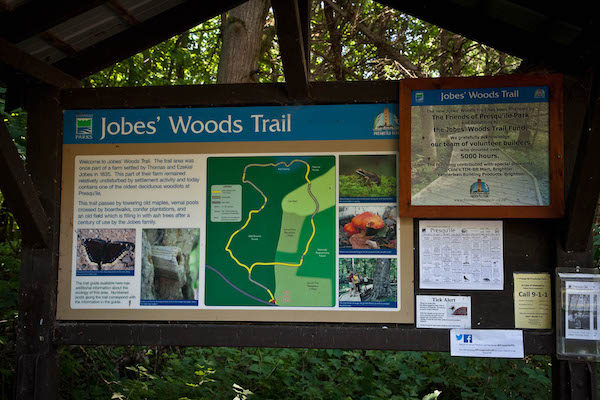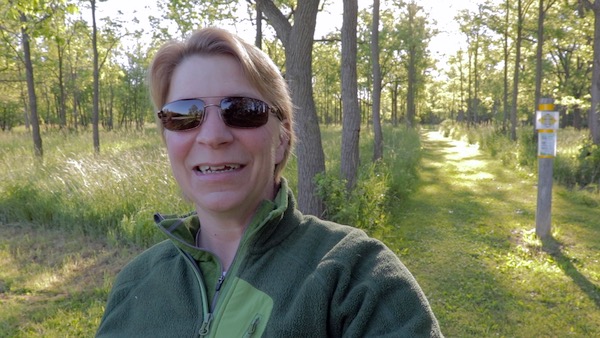During the rainy section of our camping trip to Algonquin Park in 2016 we ventured onto the Beaver Pond Trail. I left my good camera at home and set off with my small, waterproof point and shoot, just in case.
The trail was a 2 kilometre loop that went past beaver ponds, meadows and dams. We have never actually seen a beaver on this trail but if you check out the map at the Visitor’s Centre you’ll see there are active beavers all over the park. The number of little red dots on the map was astounding!
The trail started out with a warning about a cliff that the trail leads to and that hikers should be cautious, especially with young children.
The beginning of the trail is more ‘manicured’ and we found out at another trail that the reason they have put down the limestone screening isn’t to make it more accessible but to protect it from erosion. Algonquin Park receives an enormous amount a visitors each year and all of that traffic is hard on the trails, so the limestone is a preventative measure. 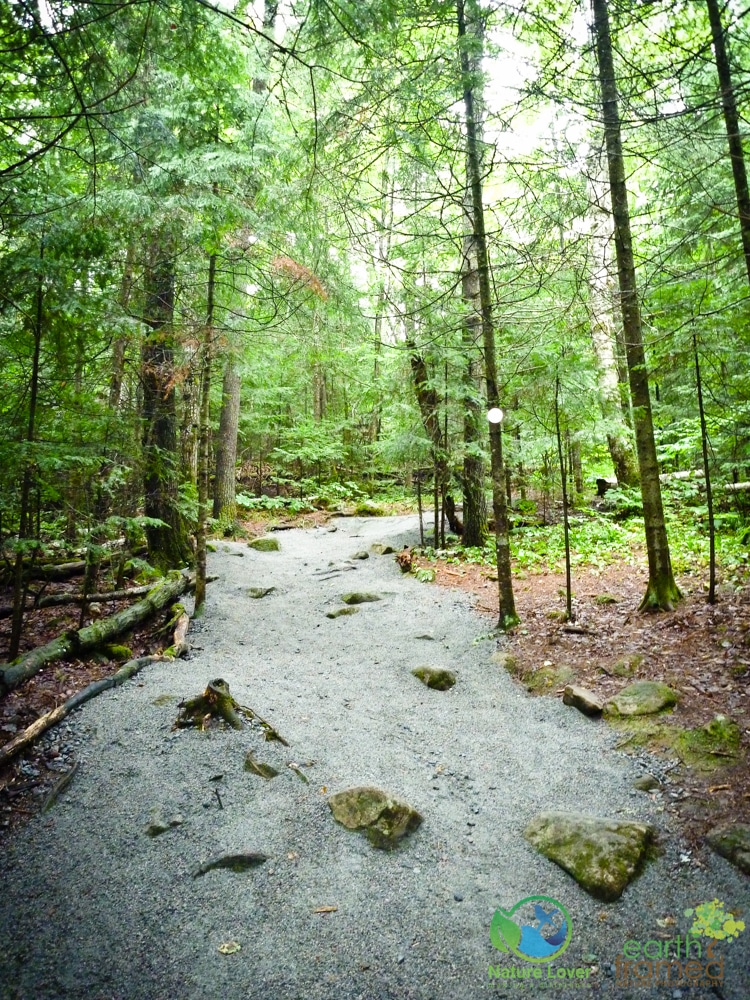
The above picture gives you a better look at the trail’s surface, but it was primarily found at the beginning and end of the trail. You will notice that the trail is still definitely not wheelchair accessible. 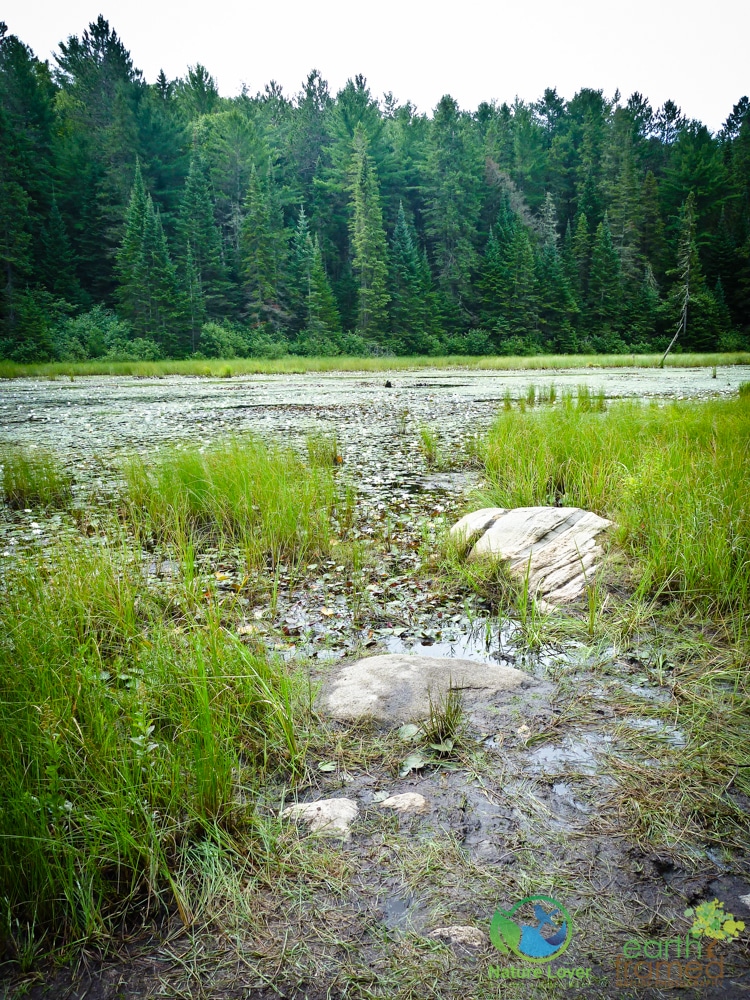
This was the first of the two pond created by beaver activity. The pond will be about one to two metres deep and it is now teaming with life. When beavers change their environments to suit them, the resulting ecosystem is usually very fertile and provides excellent habitat for various marine and forest animals.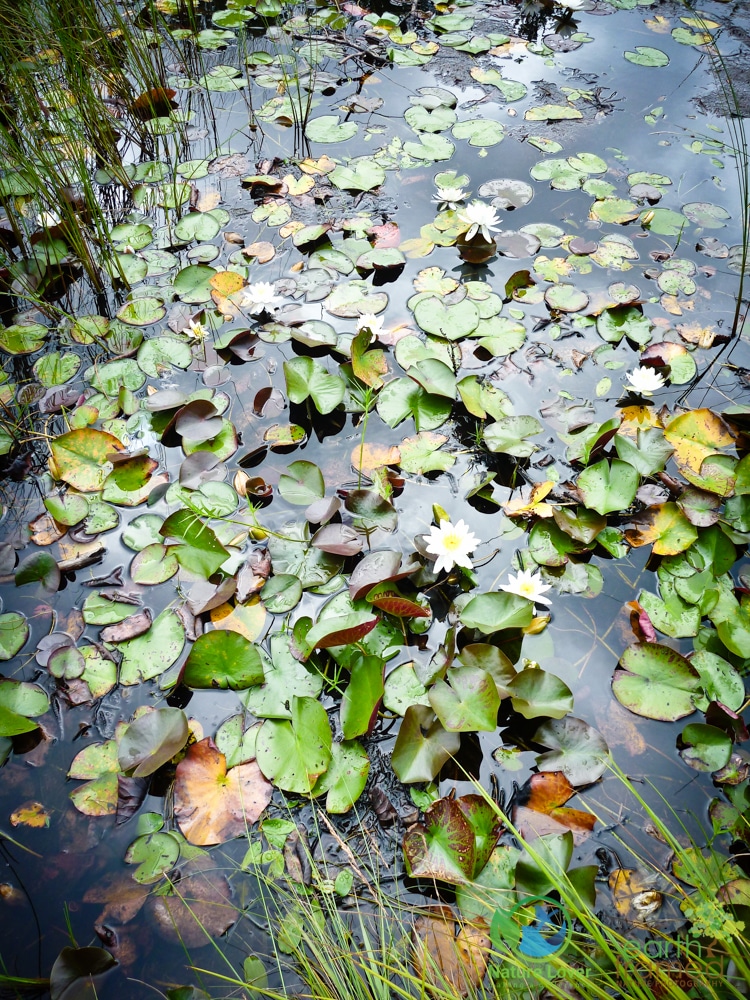
The pond was covered in lily pads which is a favourite food of beavers and moose. Beavers will eat the every part of the lily pad but moose only eat the roots of the plant. Several parts of the lily pad plant are also edible to humans.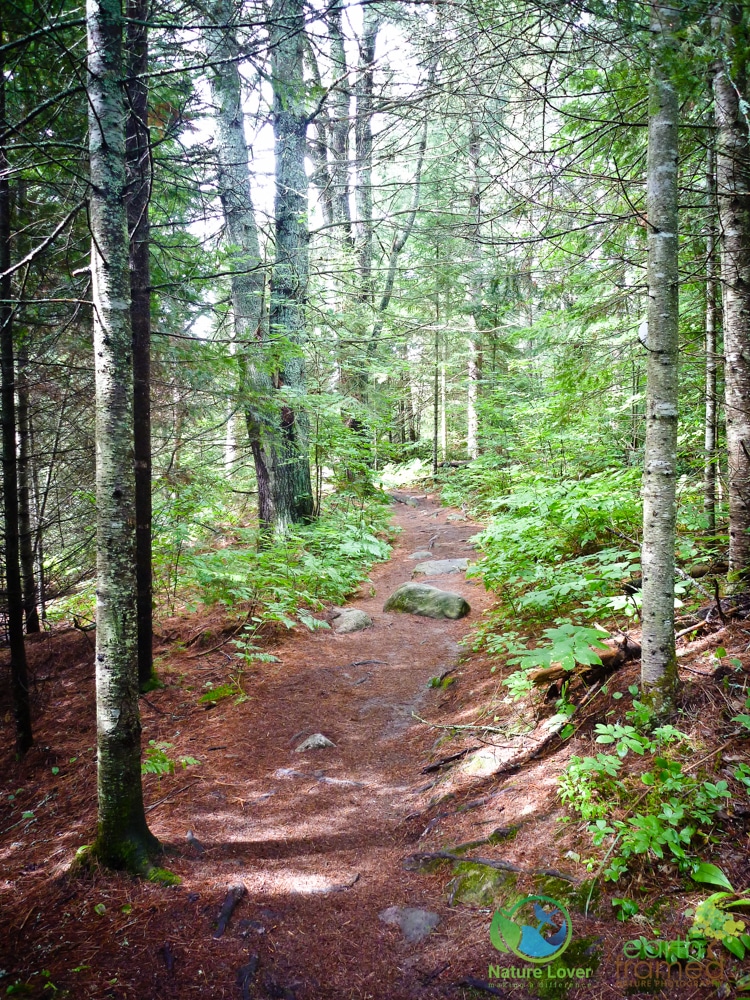
The trail got narrower and the limestone screening disappeared after the first beaver pond. Rocks and tree rocks are common obstacles on Algonquin trails, and any other trails found in the Canadian Shield.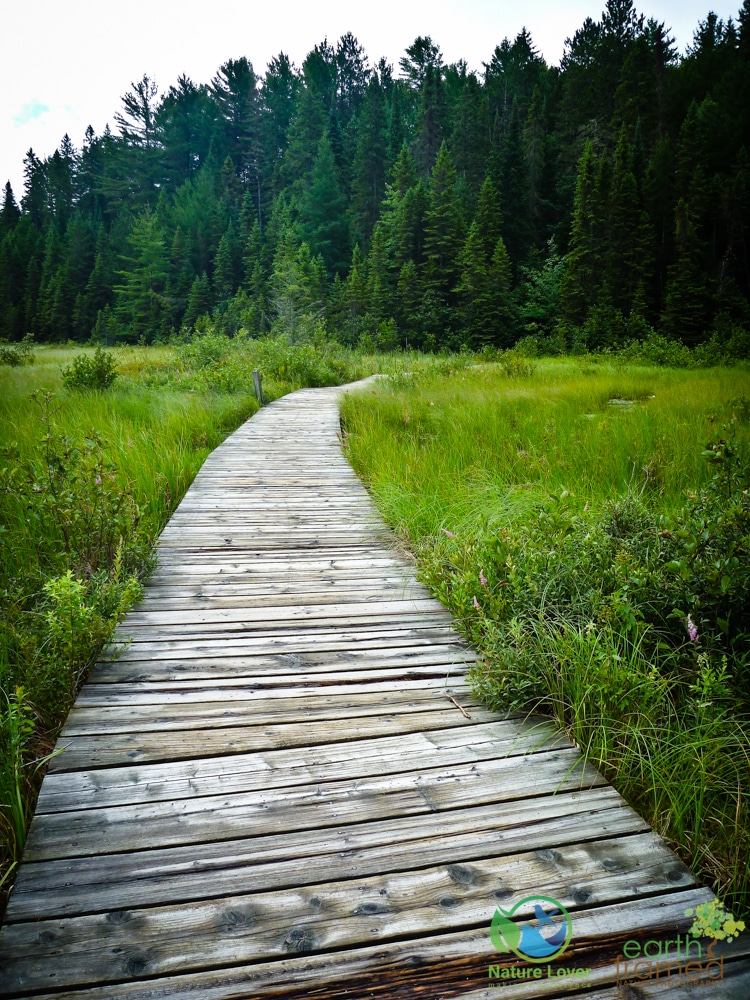
This boardwalk took us across a beaver meadow. At one time there would have been trees here, along the edge of a river. Beavers moved into the area, cut down the trees to build their dams and to flood the area. After the beavers had abandoned their lodges, the dam eventually gives, as forest succession continues, the meadow will be replaced by a thriving forest once again. Amazing, isn’t it?
As the travel lead us up and down hills and ridges, we had to conquer some pretty steep and long staircases. Maya found them more challenging and we probably wouldn’t have been able to ascend them without her harness. As she got older and lot more of her eyesight, stairs become somewhat scary. The harness not only gave us peace of mind, but I think it also gave her some courage.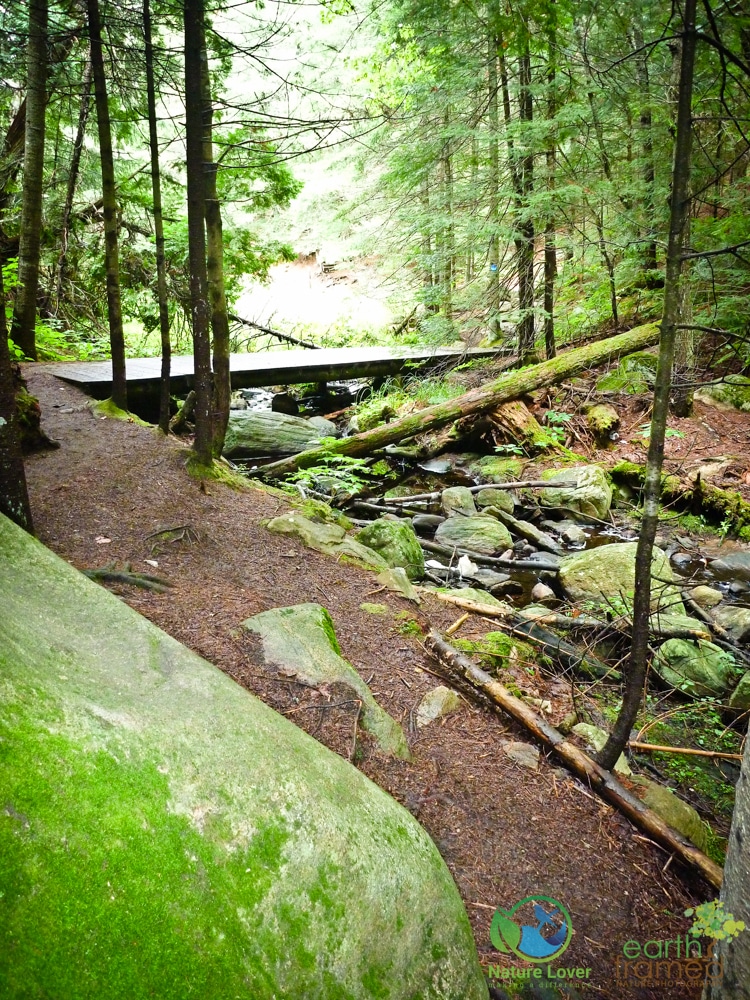
This babbling brook opened up to another beaver meadow off in the distance. The brook itself was home to several frogs and probably other creatures, if we had turned over some of the rocks.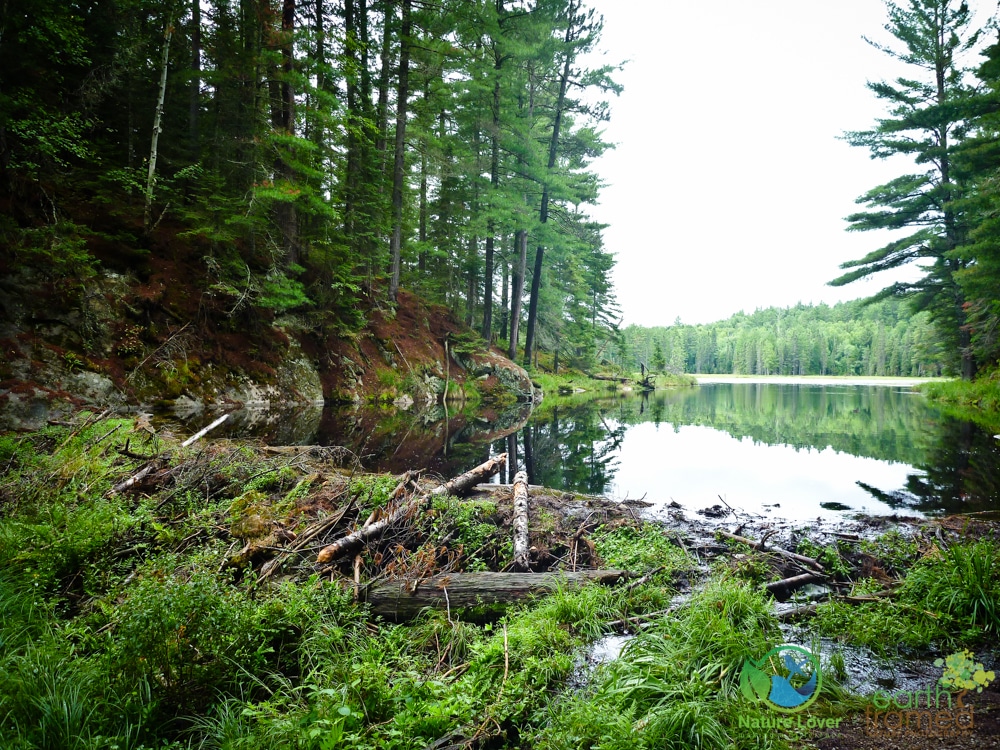
This is an up-close view of one of the existing dams. The trail is much lower than the surface of the water and it will be interesting to see what the park does when this dam finally fails and flood the trail. Will them divert the trail or will they build a boardwalk so that the trail will continue on its existing path? 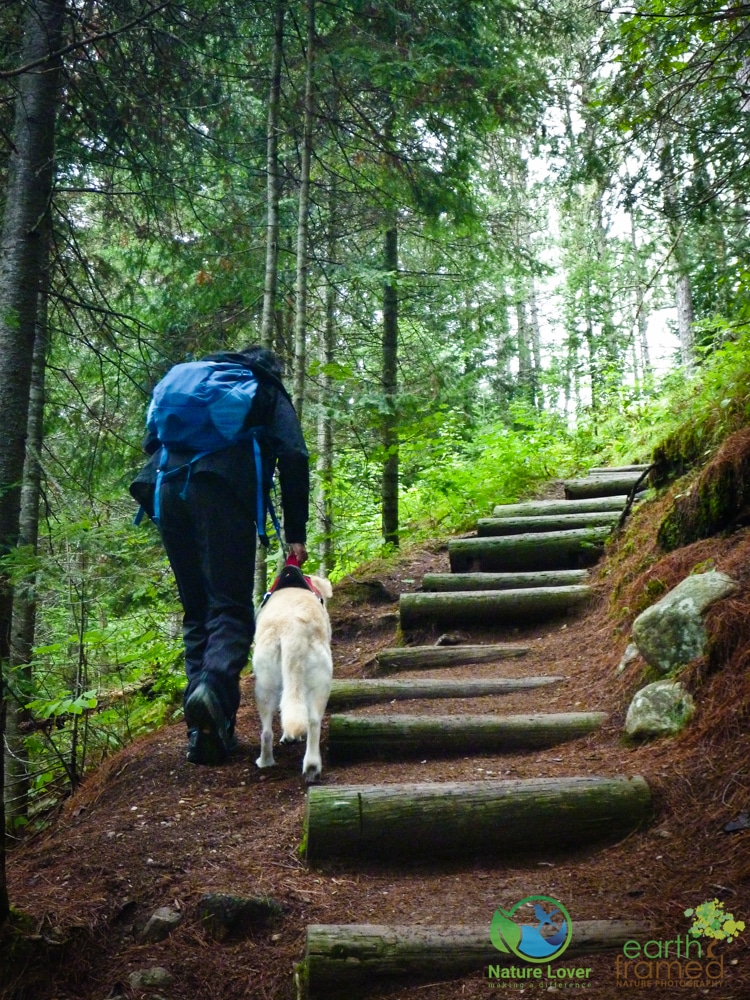
Logs were dug into this incline, probably to help hikers and to prevent erosion. Chitra took Maya up along the side of them and with the help of the harness I had to walk quickly to catch up to them.
Here is an example of how the park is dealing with erosion caused by heavy rains and by the sheer number of visitors that enjoy the park each year. The shorter trails get a lot more traffic than the longer ones, for obvious reasons.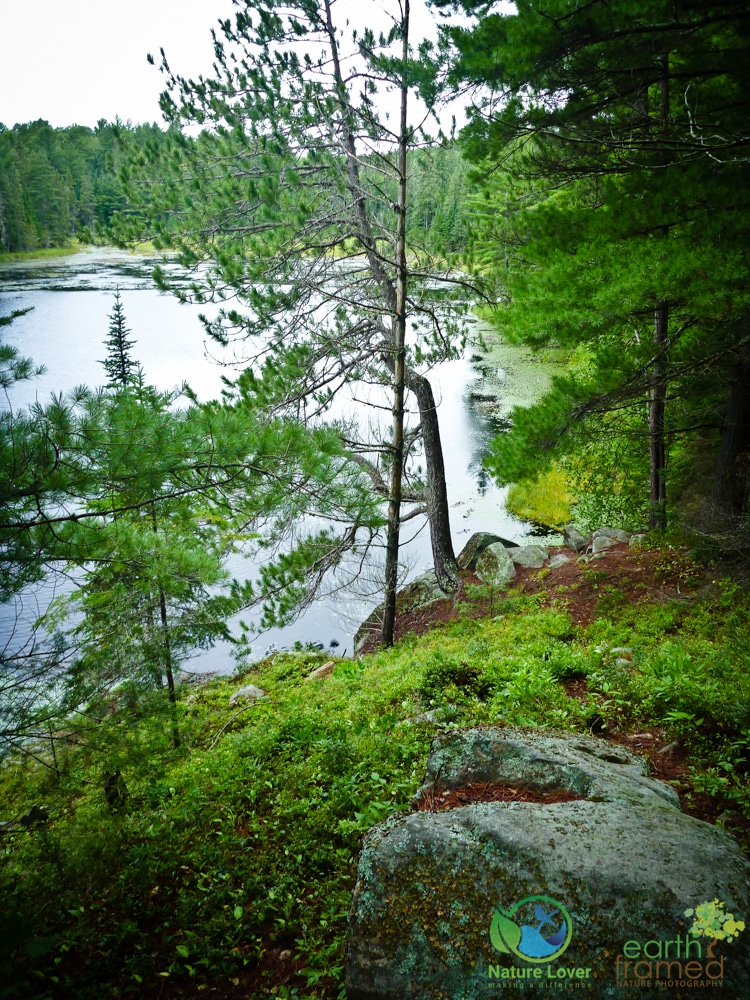
Everywhere you look you will find beautiful scenery to enjoy and photograph. Its no wonder that the park was a favourite subject for the Group of Seven, otherwise known as the Algonquin School. 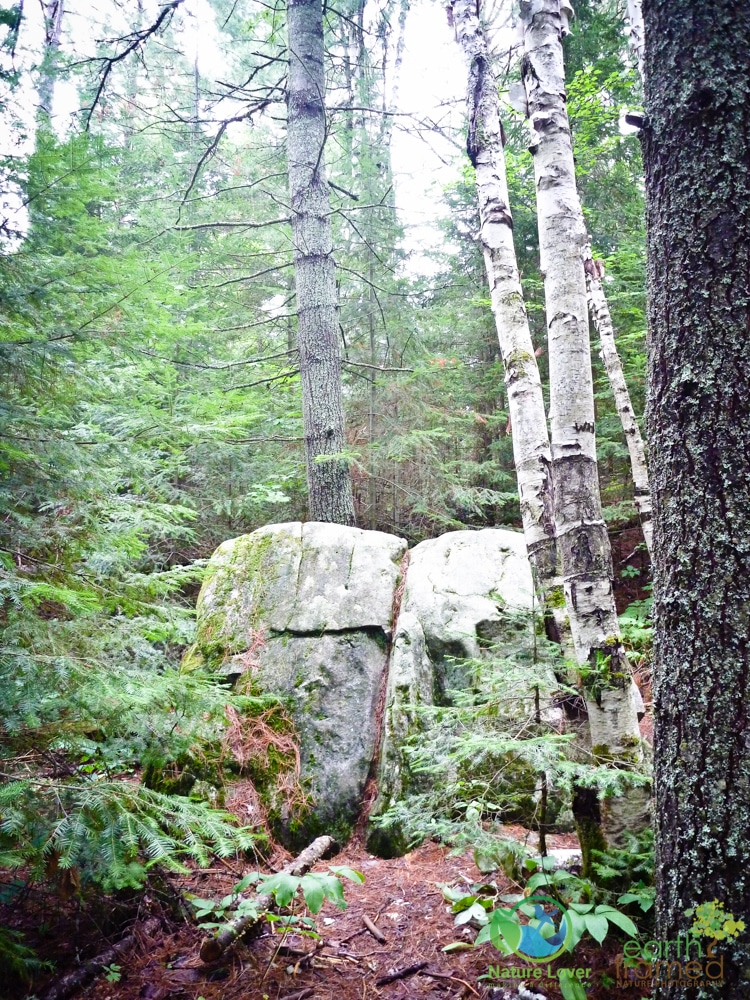
Large boulders and ridges make excellent photographic subjects and they are also awesome for climbing and getting group shots! 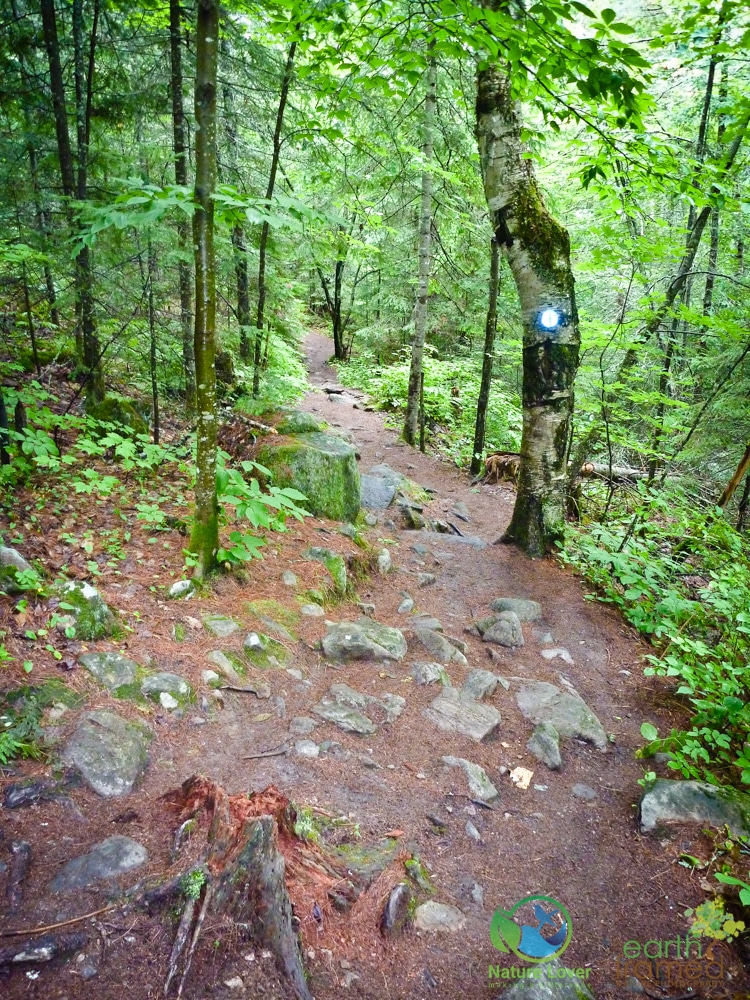
You will find all of the trails at Algonquin Park to be well taken care of, very well marked and absolutely gorgeous. You may have a favourite trail but all of them are worth hiking, repeatedly.


